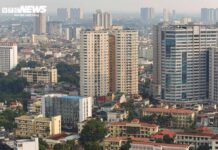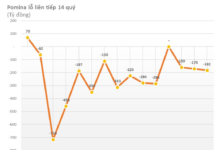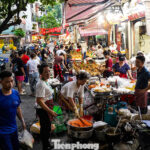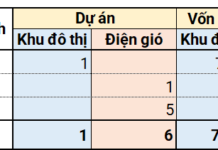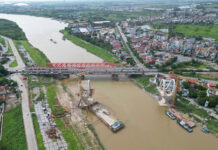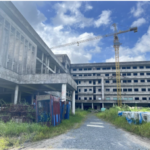
For decades, the To Lich River has been Hanoi’s environmental black spot, synonymous with polluted waters and foul odors. However, as part of the city’s green urban development strategy, the local government is determined to transform this river into a scenic axis and a vibrant urban park.

A cornerstone of this initiative is the Yen Xa Wastewater Treatment Plant, a nearly 16.3 trillion VND project with a capacity of 270,000 m³/day. This facility plays a pivotal role in treating wastewater, addressing the long-standing pollution issue in the To Lich River.

Alongside the treatment plant, Hanoi has installed a network of collection pipes along the To Lich River, channeling all domestic wastewater for treatment instead of direct discharge. This system has ended the river’s decades-long burden of handling waste from millions of households. Photo: Vien Minh – Minh Tue/VTCNews.

In addition to wastewater management, Hanoi is constructing a 550 billion VND pumping station and a 5 km canal system to divert clean water from the Red River into the To Lich. This initiative aims to enhance the aquatic environment and maintain a consistent water flow year-round.


Hanoi has also implemented a plan to divert water from West Lake to the To Lich River via a 1.5 km dual pipeline with a 1.2m diameter. This pipeline became operational on September 9th.

However, clean water alone is insufficient to create a healthy ecosystem in the To Lich River. Prior to this, Hanoi dredged over 10 km of the riverbed, increasing its depth by 1.5 to 1.8 meters. Approximately 62,000 m³ of sludge was removed, equivalent to the volume of over 900 standard containers. Photo: Do Tam/Hanoi Moi.

To regulate the water levels in the To Lich River, the Thanh Liet Dam has been constructed. This dam maintains a 3.5-meter water depth during the dry season while ensuring proper drainage during the rainy season.

Thanks to these comprehensive measures, several river sections have shown significant improvements: clearer water, the return of fish, and enhanced riverside landscaping. These changes signal a positive step toward the river’s revival.

On October 10th, construction will begin on a park along both banks of the To Lich River. This project aims to create a large public space, catering to the recreational, cultural, and social needs of Hanoi’s residents.

The “Mystery” MBH Holds 70% of the Twin Tower Project for the 17-Story Headquarters of the Son Hai Group
The Twin Towers of the Son Hai and ELCOM Group’s Headquarters and the ELCOM Innovation Hub are part of a grand vision for the future: the Tay Ho Tay Mixed-use Complex Project. This ambitious development encompasses a comprehensive range of facilities, including offices, a commercial center, and a cultural hub, all seamlessly integrated to create a vibrant and dynamic destination.
“Hanoi: Authorities Seize a Ton of Illegally-Sourced ‘Hanoi Grilled Sausage’”
The Hanoi Police, in collaboration with the Market Management Force, have seized a ton of unidentified sausages, a popular delicacy among street vendors. This worrying discovery highlights the ongoing issue of food safety and the importance of vigilant authorities in ensuring the health and well-being of the community.
The Green Urban Revolution: Hanoi’s Ambitious Low-Carbon Future
“There is a growing consensus among experts and Hanoi residents alike in support of the city’s ambitious plan to fast-track the implementation of a low-emission zone (LEZ). The plan, which aims to reduce air pollution, involves shortening the timeline for the LEZ rollout by five years. This bold move underscores Hanoi’s commitment to tackling one of the most pressing environmental challenges of our time.”
The Elite’s Marketplace in Hanoi on the Morning of the Full Moon Festival: Roses in Roosters’ Beaks, Priced at Half a Million Dong Each.
As the sun rose on the 15th day of the 7th lunar month, Hang Be Market in Hanoi’s Hoan Kiem District buzzed with shoppers. Known as the “market for the rich” in the Hanoi old quarter, it attracted those seeking elaborate offerings for their ancestral worship rituals, including chickens with roses in their beaks.





